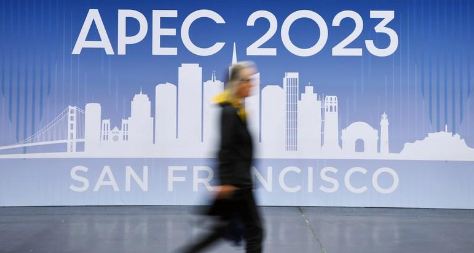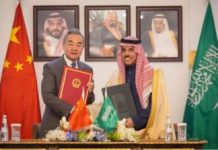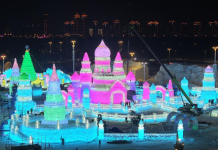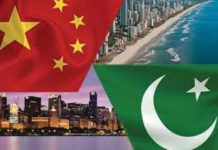By Huan Yuping, People’s Daily
The 30th Asia-Pacific Economic Cooperation (APEC) Economic Leaders’ Meeting is scheduled for Nov. 15-17. Currently, the Asia-Pacific region enjoys overall stability, and regional cooperation continues to make progress. Peaceful development and win-win cooperation remain the mainstream.
At the same time, the world enters a new period of turbulence and transformation, with geopolitical tensions and an evolving economic landscape impacting the development environment and cooperation framework in the Asia-Pacific region.
Standing at a new crossroads, whether Asia-Pacific cooperation can stay true to its original aspiration, follow the correct direction, and steadfastly move towards the goal of building an Asia-Pacific community with a shared future, is crucial to world peace and development, and tests the wisdom and responsibility of all parties in the region.
The 21st century is the Asia-Pacific century. The establishment and development of APEC are in line with the historical trend of openness and integration, the strong aspiration for development in the Asia-Pacific region, and the common demand of people from various countries for jointly addressing challenges.
Over the past more than 30 years since its establishment, APEC has gradually grown into the highest-level and most influential mechanism for economic cooperation covering the broadest area in the Asia-Pacific region. It has witnessed the historical achievements of Asia-Pacific development and is an important propeller of the “Asia-Pacific miracle.”
According to the Regional Economic Outlook for Asia and Pacific recently released by the International Monetary Fund, the region is expected to grow by 4.6 percent this year, and economic activity in Asia and the Pacific remains on track to contribute about 2/3 of global growth in 2023. This once again highlighted the Asia-Pacific region as the most dynamic and promising economic area of the world, and a crucial engine for global economic growth.
The success story of APEC is a remarkable chapter in the construction of an open world economy. Guided by the Bogor Goals, APEC has continuously enhanced regional economic integration. It has advanced trade and investment liberalization and facilitation in tandem with economic and technical cooperation, with a view to realizing mutual complementarity and balanced development of the “two wheels” of APEC cooperation.
APEC, guided by open regionalism and the principles of diversity and non-discrimination, has become an architecture for inclusive and win-win regional cooperation. It has not only benefited the region, but also played a significant role in leading the evolution of the multilateral trading system.
Over the past decades, economies in the Asia-Pacific region have broken market barriers, strengthened economic ties, and actively embraced the world, creating vast opportunities for economic development.
In the 26 years since the implementation of the Bogor Goals, the region’s trade volume increased five times with an average annual growth rate of 6.7 percent, and two-way investment increased 12 times with an average annual growth rate of over 10 percent.
Currently, the international situation is complex and volatile. The Asia-Pacific region has seen practices that distorted international norms, impeded economic ties, and exacerbated regional tensions.
At this critical juncture, all parties in the region need to take a strategic and long-term perspective on Asia-Pacific cooperation. By upholding APEC’s role as the main channel in regional cooperation and keeping Asia-Pacific cooperation in the right direction, the region can effectively respond to the challenges of the times and jointly forge a new path for development.
To further strengthen APEC cooperation, it is important to adhere to the established goals. APEC members, based on the initial realization of the Bogor Goals, have launched the Putrajaya Vision 2040, aiming to build an open, dynamic, resilient and peaceful Asia-Pacific community, which offers important guidance for economic cooperation in the region in the near future.
With clear objectives in place, it is crucial to take action. APEC members should deepen cooperation within the APEC framework, advance the Free Trade Area of the Asia-Pacific, and implement the Putrajaya Vision 2040.
Deliberate attempts to dilute the concept of “Asia-Pacific” and replace the region’s well-established cooperation structure with a new one will only divert Asia-Pacific cooperation from the right track and hinder the development of the region.
To further strengthen cooperation within the APEC framework, it is necessary to build closer partnerships. APEC is a big family, and it is in the common interest of all members to build an open Asia-Pacific economy featuring innovative development, interconnected growth, and shared interests. The Asia-Pacific partnership featuring mutual trust, inclusiveness and mutually beneficial cooperation is the spiritual bond of the APEC family and an important guarantee for keeping APEC cooperation on the right track.
There are various national conditions in the Asia-Pacific region, thus there will be differences. The key is to adhere to the common goal of seeking development, promote the spirit of partnership, negotiate and address differences, and explore solutions to common challenges.
Only by adhering to the right direction can regional countries renew the “Asia-Pacific miracle” together. Each APEC member should uphold the purposes and principles of APEC, continuously deepen partnerships in the Asia-Pacific region, promote the spirit of the Asia-Pacific family, and work together in solidarity and with mutual assistance. Building an Asia-Pacific community with a shared future is the correct choice that conforms to the trend of history, regional consensus, and the will of the people.

















